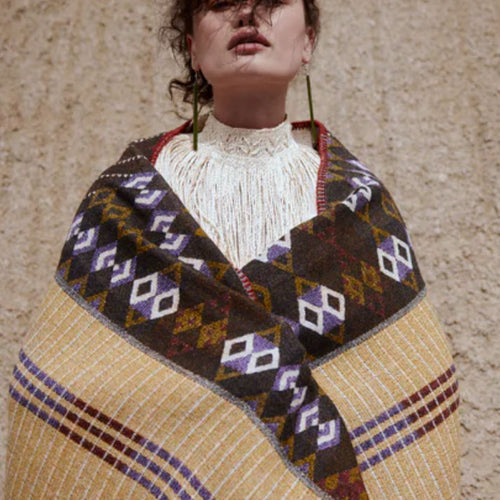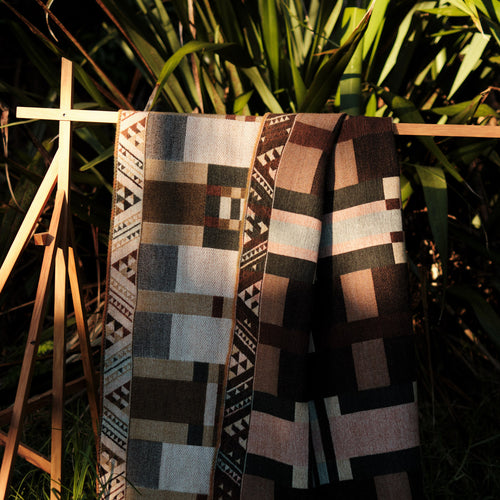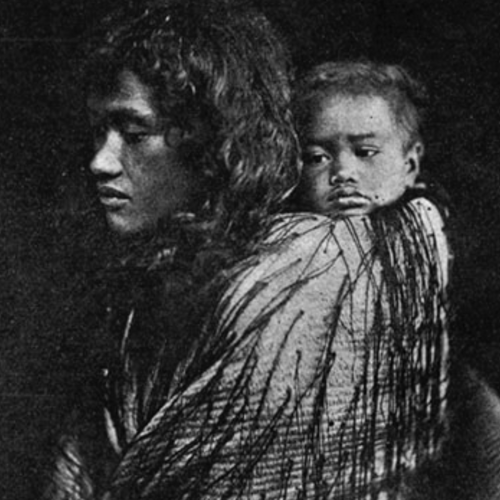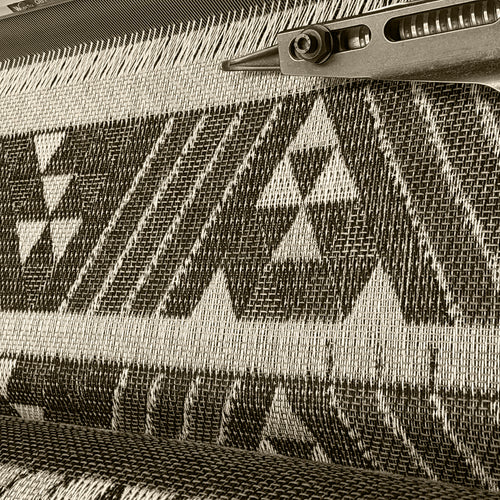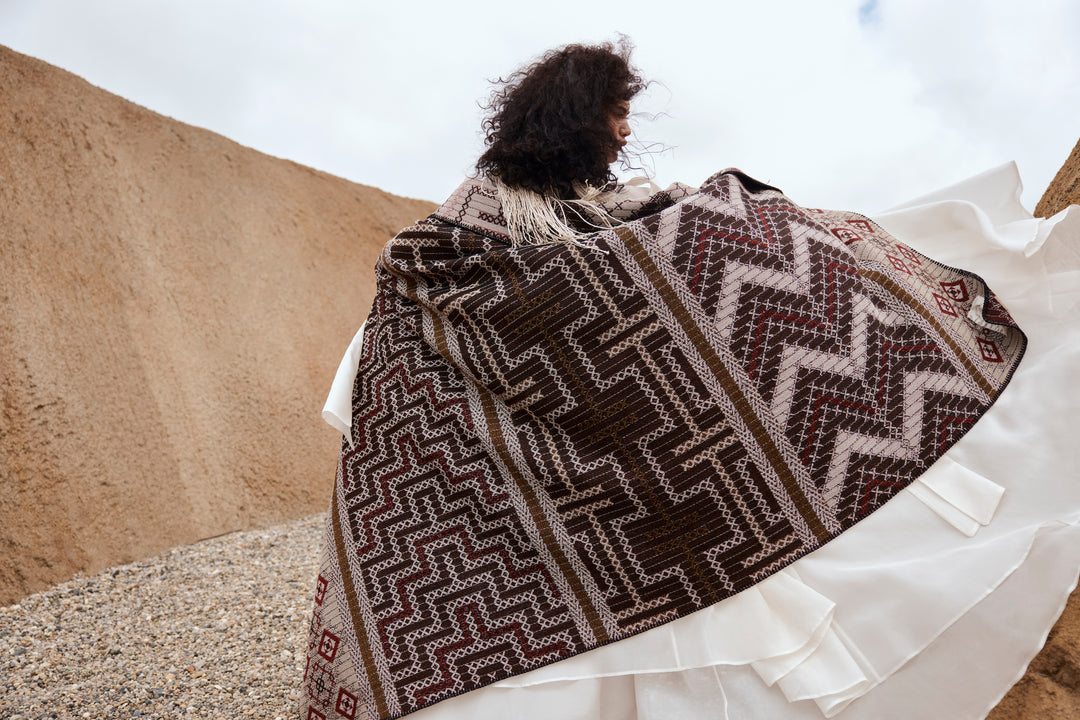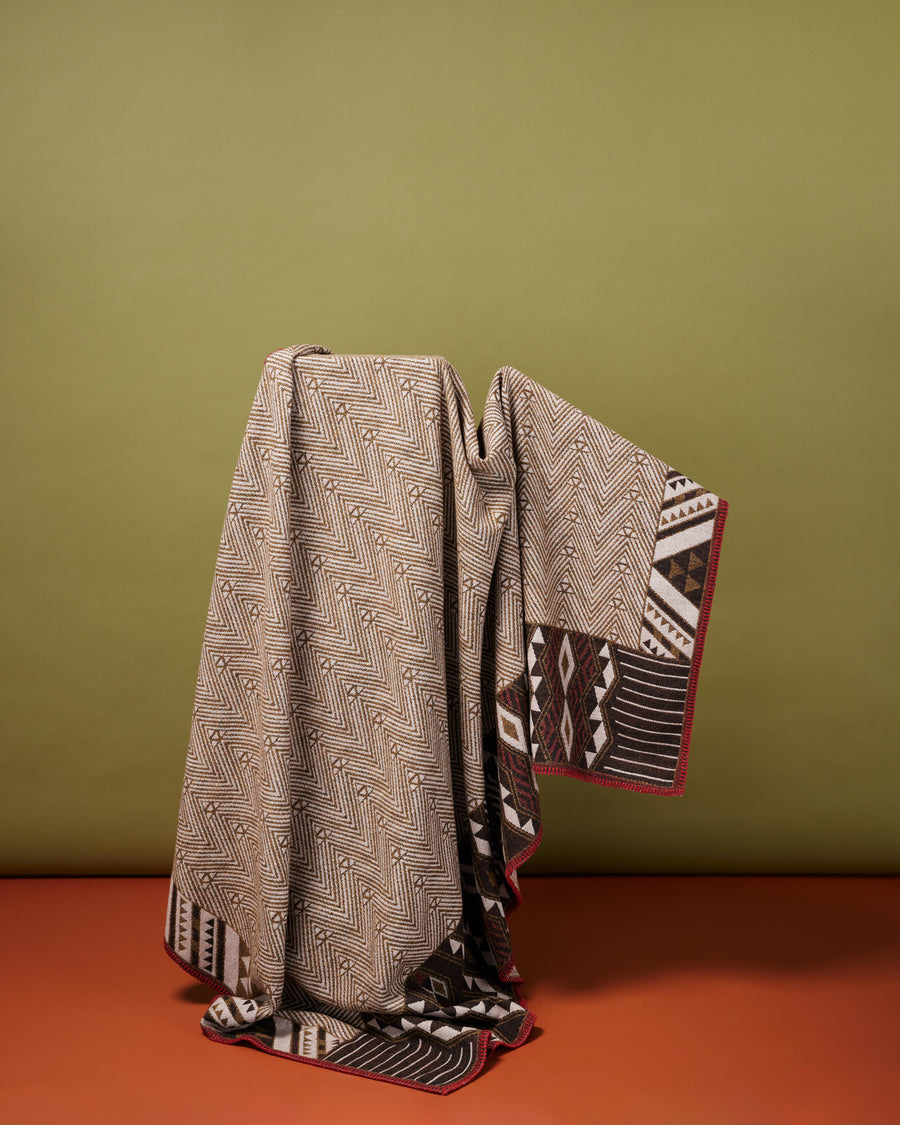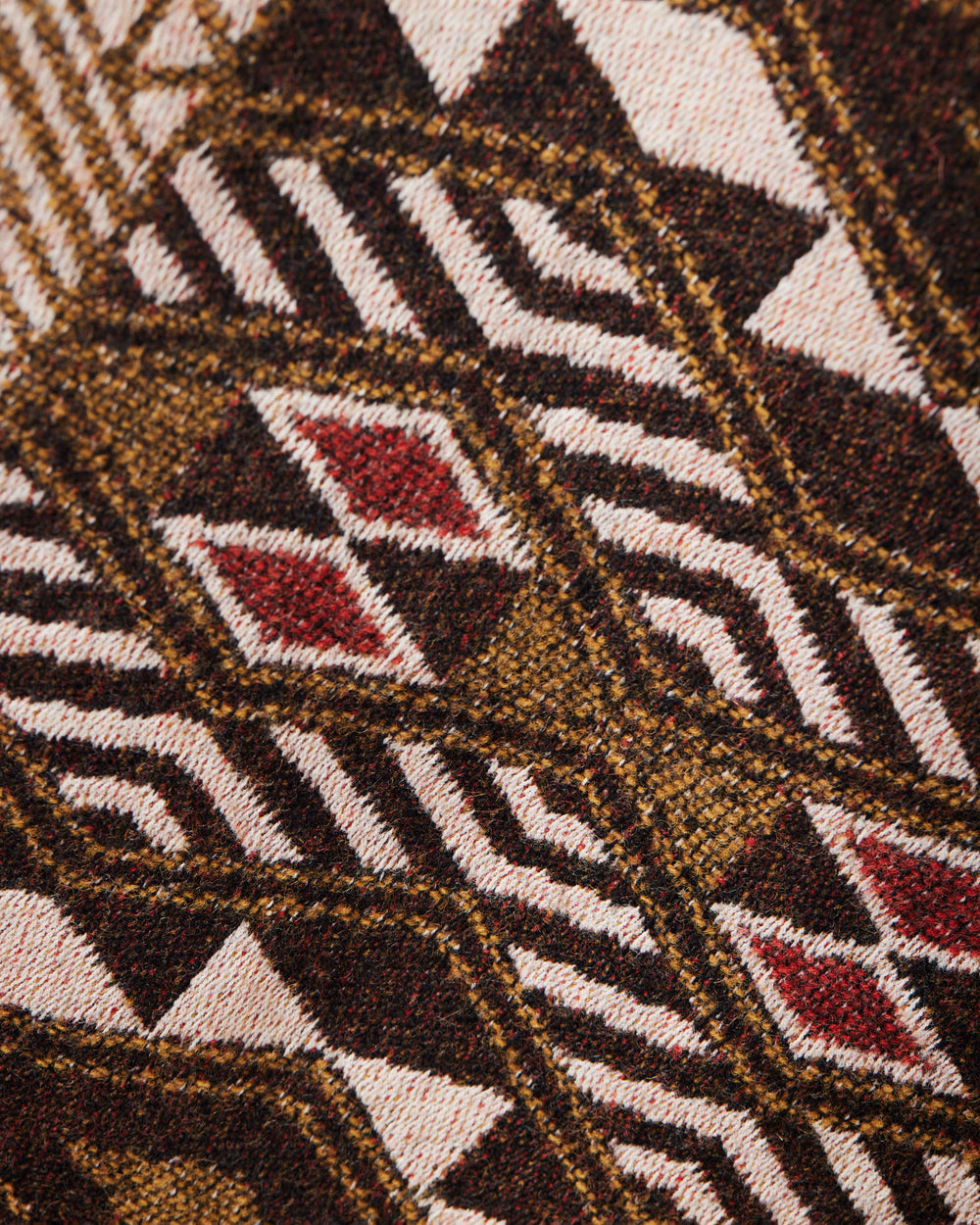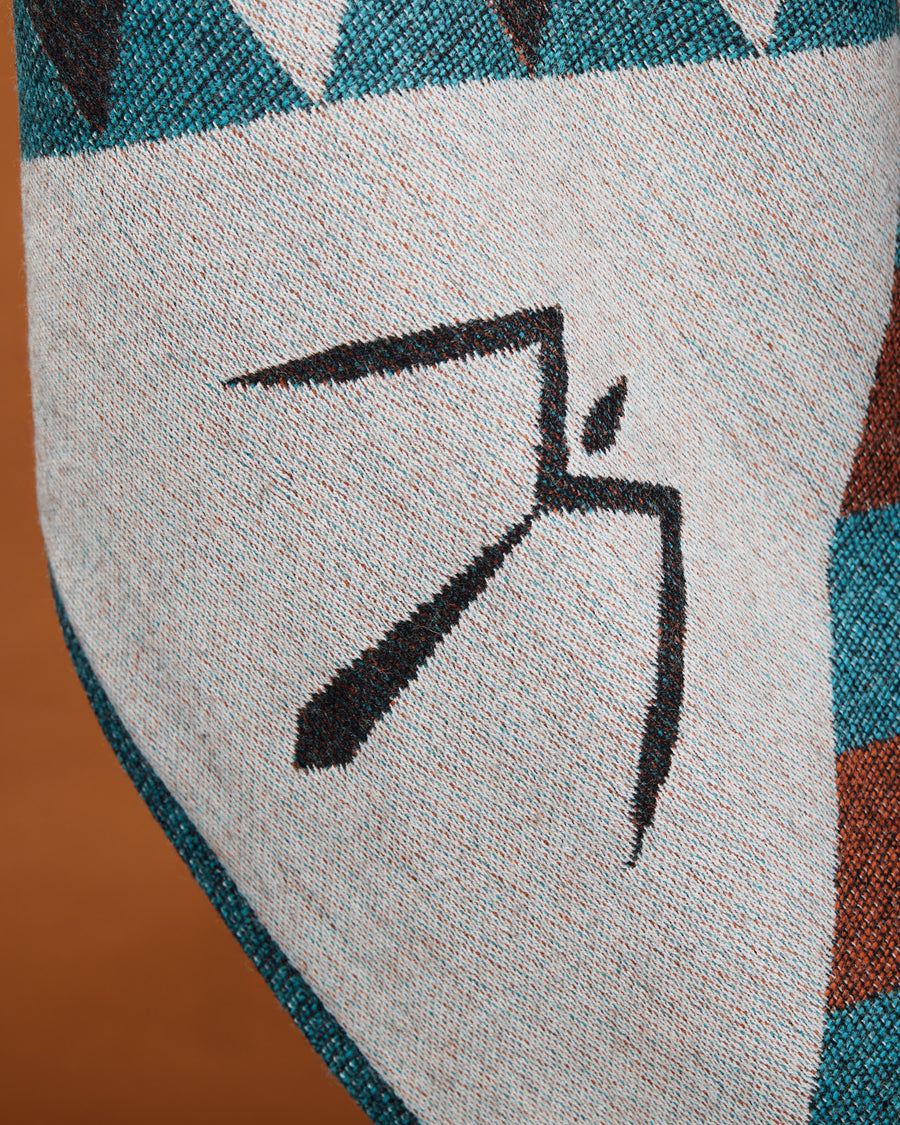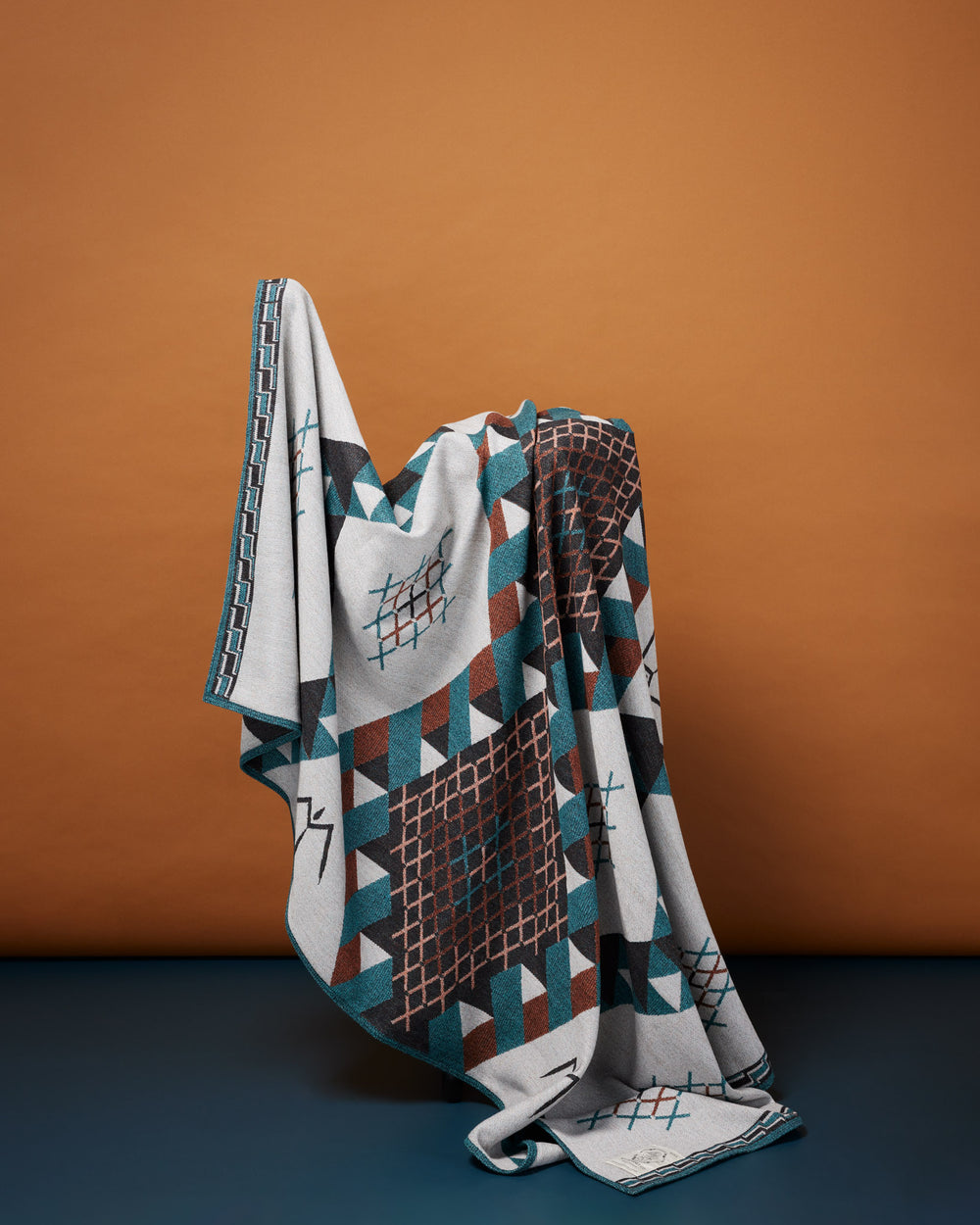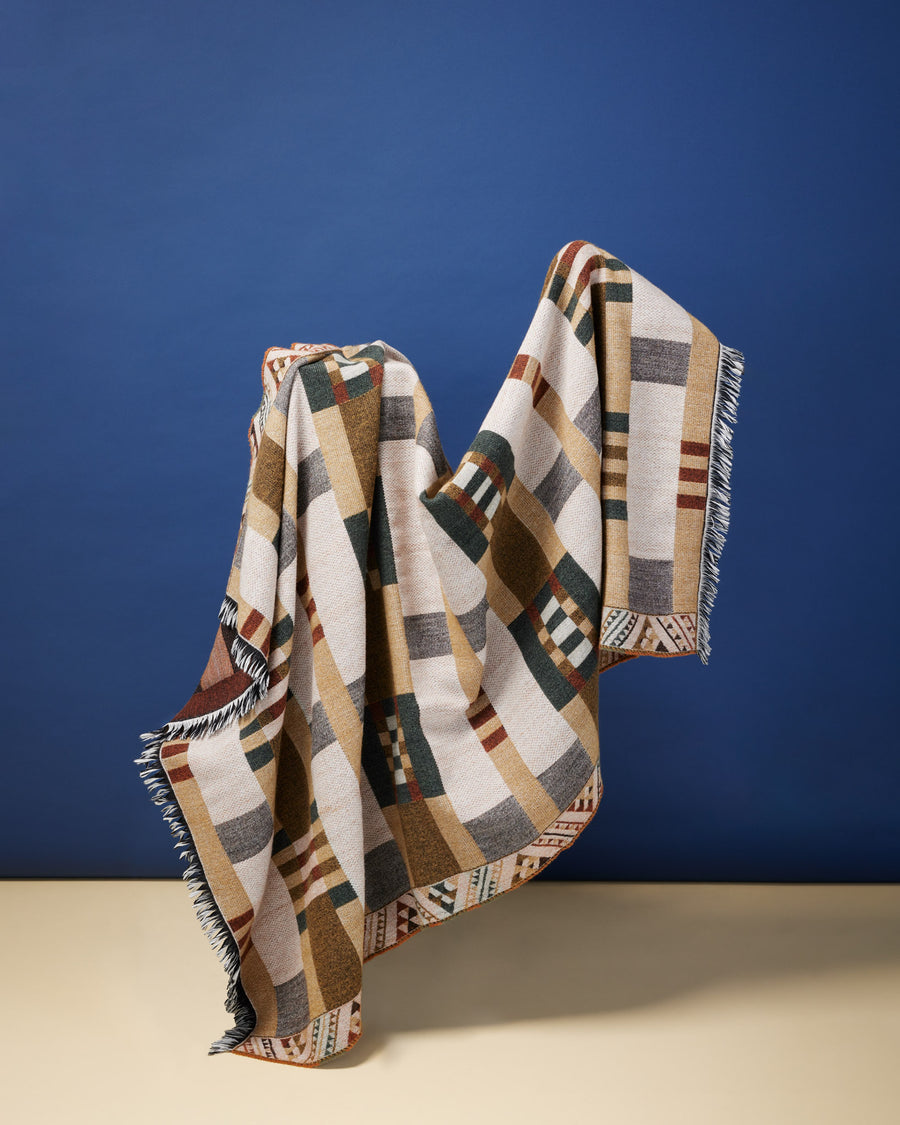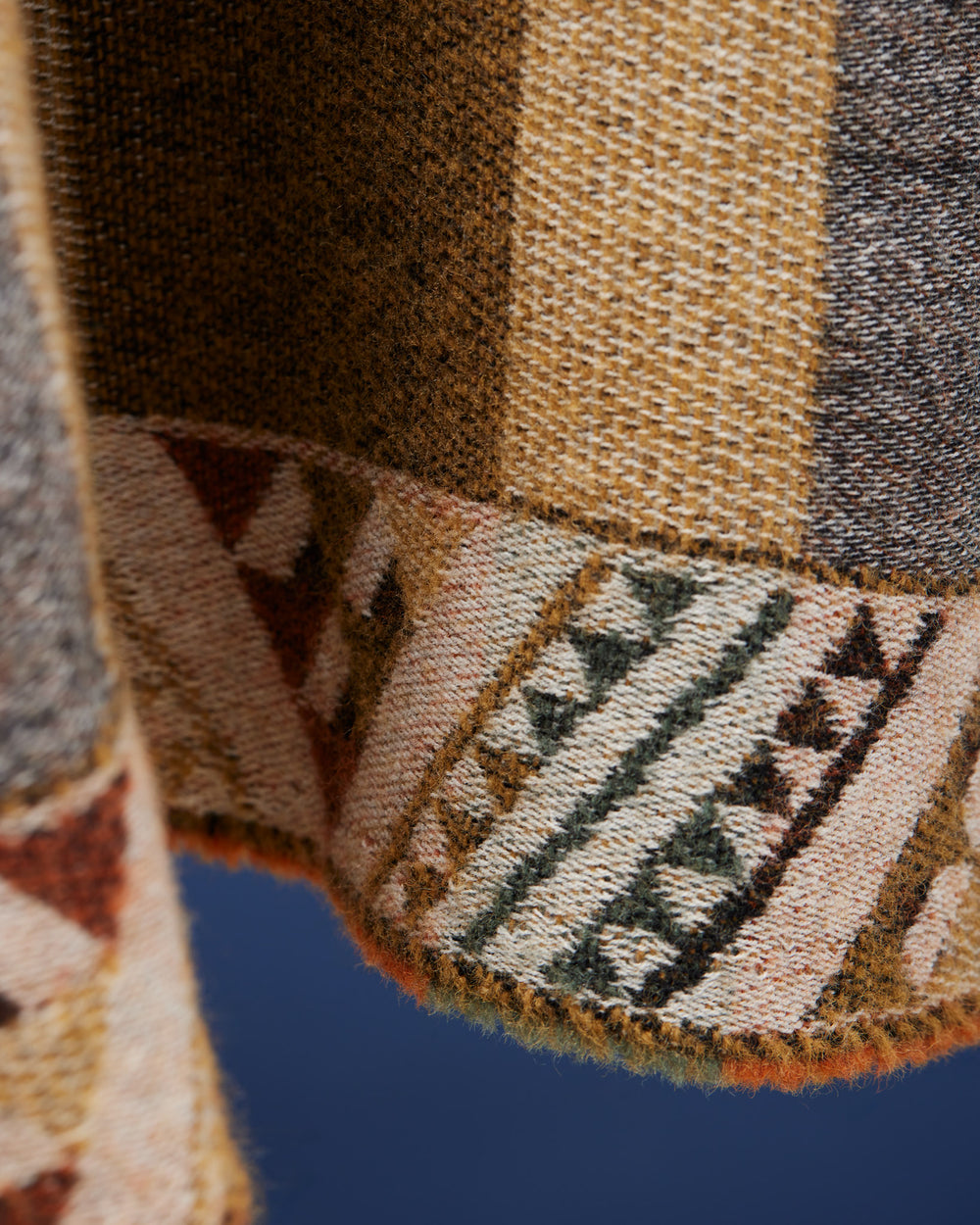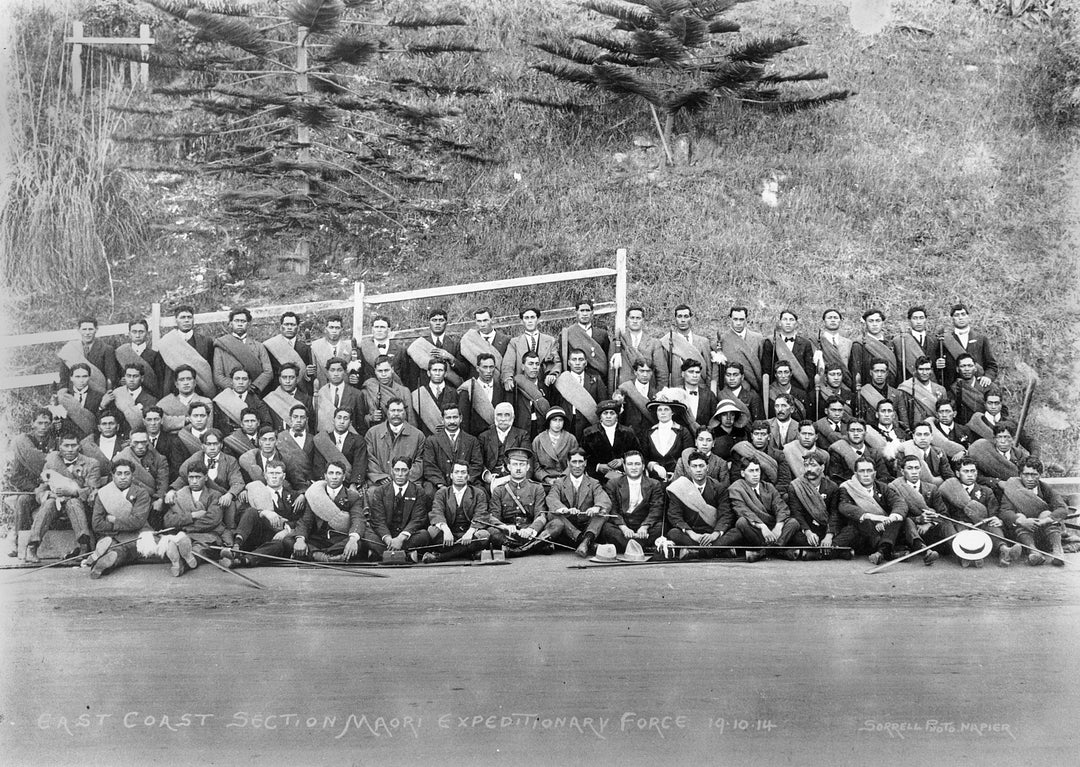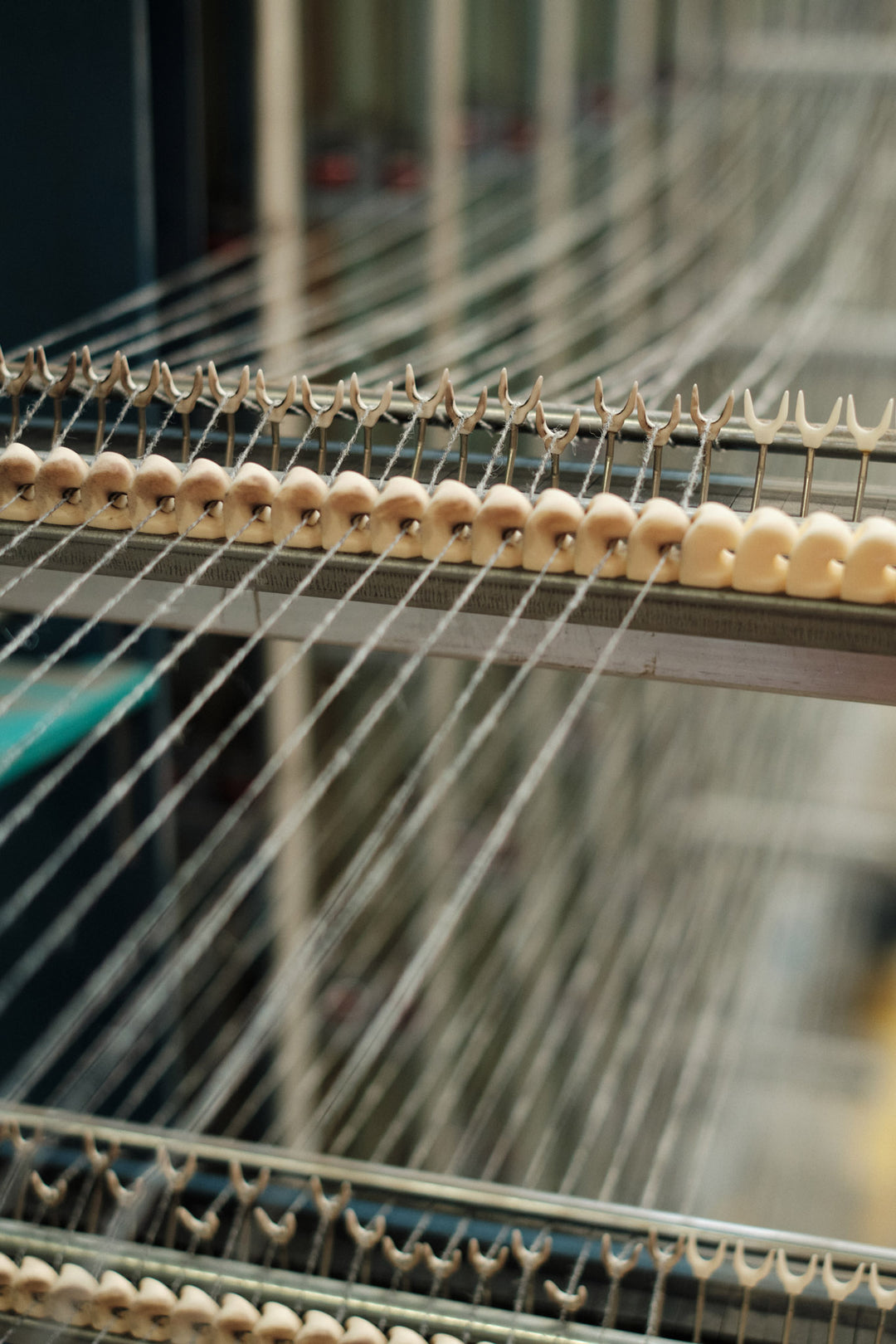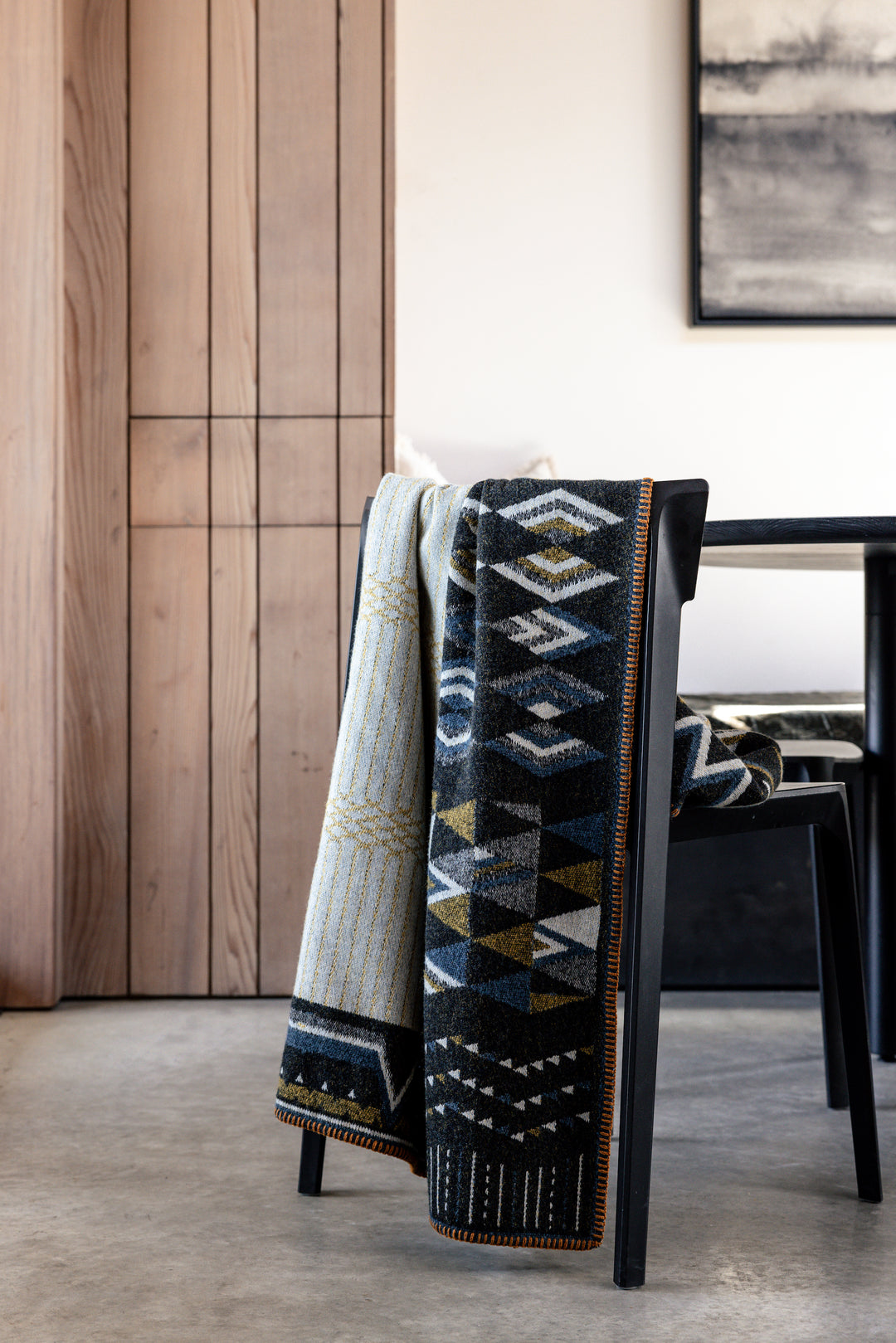Tūmatakahuki - Behind the Weave
Across the breadth of a person's life, what remains resolute in our endeavours are our core human values, our mātāpono.
These mātāpono provide a code of conduct, a set of life principles that define what matters to us, what kind of person we want to be. Our purpose is something we continually practise as we become that person. This blanket design reflects these core values, as described in the traditional design principles of tukutuku (traditional lattice work). It echoes the homegrown examples of the character, ideals and qualities that matter to us. A reference to what’s at the heart of our being, and reassurance of our purpose as it continues to grow across the span of our lives.

Tūmatakahuki is a term for the binding stitch for tukutuku panels - used to bind the horizontal and vertical kākaho together to form the basic structure of the panel.
This design narrative reflects the intertwined nature of the Māori worldview, we are indeed connected and bound to each other, our natural world, our past, present and future, so our ancestral principles empower our present as we make mokopuna decisions for the betterment and enhancement of those to come.
Tūmatakahuki honours and recognises the knowledge holders and keepers of our stories of connection to people and place. They embody our traditional values of care and are a shelter of reassurance and strength, reminiscent of our ancestral house, adorned with tukutuku.
Design insights:
Originally part of the structural design of ancient houses, tukutuku were made by creating a latticework of vertical and horizontally placed dried stalks of kākaho, the creamy-gold flower stalks of toetoe grass, and kākaka, long straight fern stalks, or wooden laths of rimu or tōtara, called variously kaho tara, kaho tarai or arapaki. These panels were lashed together working in pairs from either side, using the rich yellow strands of pīngao, white bleached or black-dyed kiekie, and sometimes harakeke, to create a range of intricate and artistic patterns. This has inspired the colour palette within this blanket design.
This method of construction historically created a warm, insulating type of decorative wallboard and in some situations, a central vertical stake, tumatakahuki, was lashed to the panel to aid its strength and stability. Nowadays, tukutuku panels are created for their aesthetic appeal and storytelling ability and are attached to the structure of new buildings.

Like many Māori artforms, the art of tukutuku came perilously close to being lost. In 1916, Apirana Ngata could find only one practising carver left on the East Coast, Hone Ngatoto. As a result of Ngata’s concerns, the Māori Arts and Crafts Act was passed in 1926, and the Board of Māori Arts was established. As an ode to the late Tā Apirana Ngata and our genealogical links to Ngāti Porou, we’ve also included the Porourangi Poutama pattern introduced by Apirana which sits central to the design. Some of the traditional cross stitched patterns which inspired this blanket design are poutama, waharua, kaokao & pātikitiki.
The art of tukutuku weaving is still at risk. It is a time-consuming craft that demands patience and persistence.
